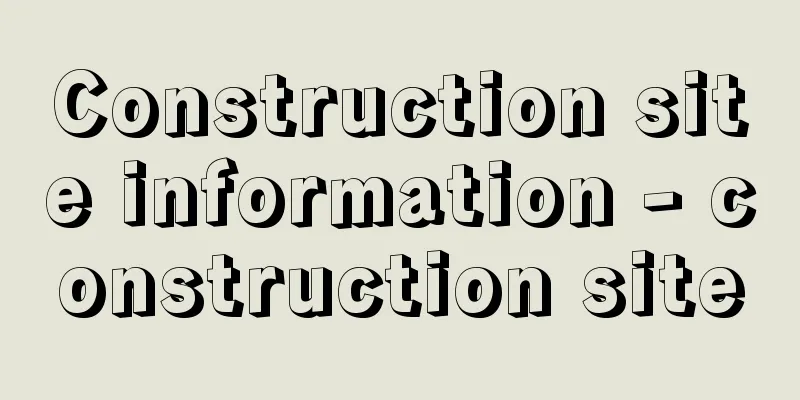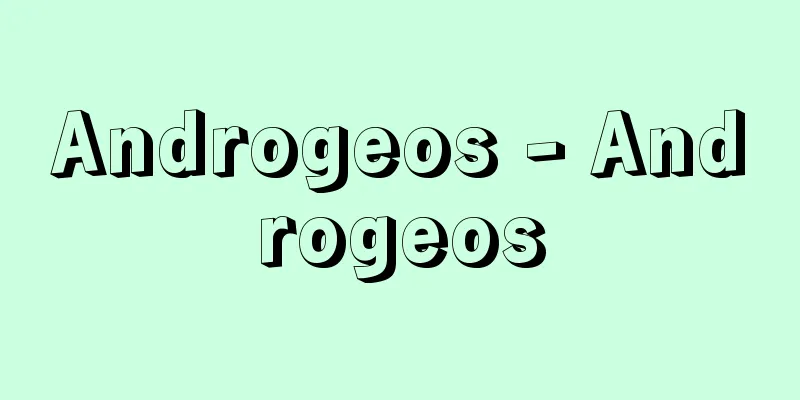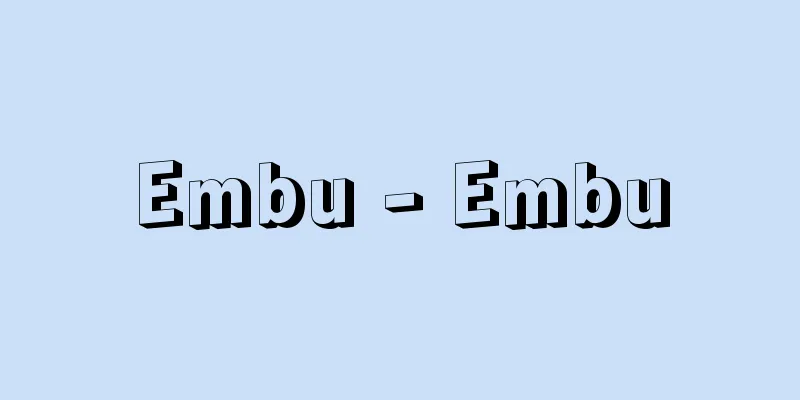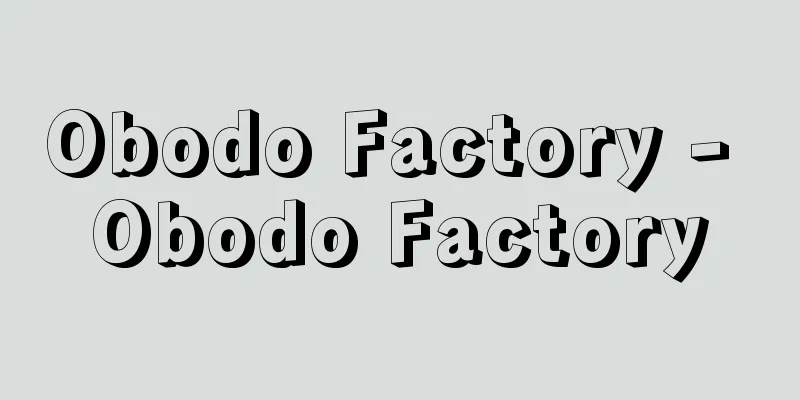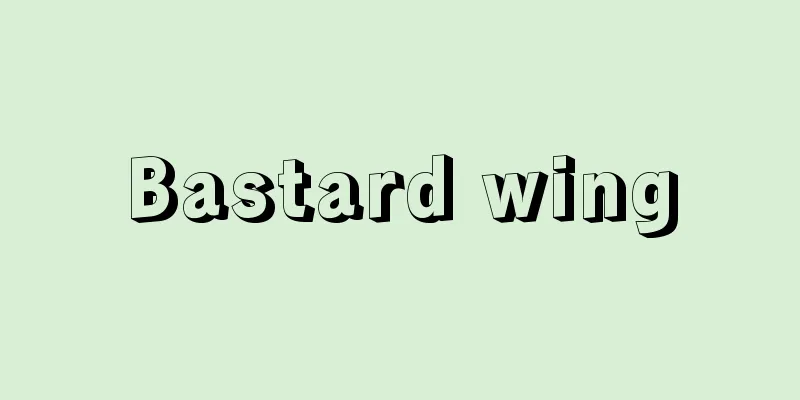Educational evaluation
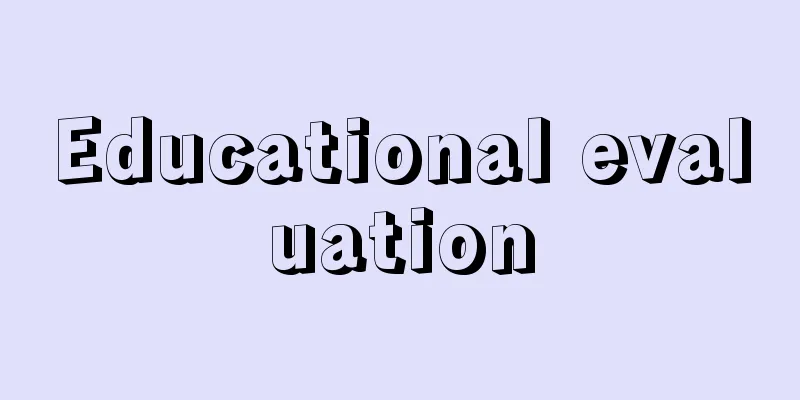
|
In a broad sense, it refers to the overall process of interpretation, in which the actual state of educational phenomena is grasped and judged, and the process of utilizing the interpreted information to solve educational problems. In a narrow sense, it refers to only the former. In other words, educational evaluation is a general term for activities aimed at appropriately grasping and judging specific matters related to learning and growth, and attributing meaning and value to them, thereby examining the state of education in order to improve educational systems and educational practices, and at using evaluation information to help with decision-making to solve specific problems. The main purposes of educational evaluation in school education are: (1) inspection and improvement of educational administration (examination of national and local educational policies, etc.), (2) inspection and improvement of school management (examination of each school's curriculum and management methods, etc.), (3) inspection and improvement of educational practice and learning guidance (examination of teachers' educational practice and instruction methods, such as classes), (4) promotion of self-evaluation by learners (self-confirmation and self-reflection on learning and growth), and (5) provision of information to families and the community (collaboration between schools, families, and the local community regarding education, learning, and growth). [Subjects of educational evaluation] The subjects of educational evaluation are diverse, but can be broadly divided into learners, educational practices, and educational conditions. Because the purpose of education is to promote learners' learning and growth, educational evaluation is in principle based on an evaluation of learners. Specifically, the aptitude of each learner or learning group (individual difference factors that affect the success of learning, such as readiness, intelligence, personality, interests, attitudes, and cognitive style) and the process and results of each learner's learning and growth are subject to evaluation. The latter is specifically called learning evaluation, and is the most important basis for educational evaluation. Specific evaluation targets for educational practice are as follows. First, evaluation of individual and specific educational activities. This includes not only activities for subject education (such as lessons), but also extracurricular educational activities such as school events, self-governing activities, and club activities, and all of these plans, implementation processes, and results are evaluated. Teachers, who are the main actors in organizing educational activities, are also included in the evaluation. Second, curriculum evaluation. In other words, the evaluation targets include the principles of curriculum organization, educational content and its structure (subject organization, core setting, content arrangement, grade allocation, etc.), how to take courses, and teaching guidelines. In this case, it is necessary to not only focus on the explicit curriculum that is organized intentionally and planned, but also to evaluate the implicit curriculum that is learned regardless of the intentions and plans of the educators. Third, the evaluation targets the classroom (interactions between members, group structure, process of classroom grouping, classroom climate, etc.) and the school (teacher group, school management organization, etc.) as educational environments. Evaluations of educational conditions include evaluations of the physical environment (facilities, equipment, etc.), evaluations of the local community (needs, etc.), and evaluations of the education system. [Subjects of educational evaluation] The subject of evaluation (evaluator) is a person who is in a position to be involved in or participate in the inspection and improvement of education, learning, and growth, and examples of this include teachers, learners, school administrators (principals, etc.), educational administrative authorities (local boards of education, etc.), parents, and local residents. Depending on the relationship between the evaluator and the person being evaluated, educational evaluation can be divided into two types: peer evaluation and self-evaluation. Peer evaluation refers to cases where the evaluator and the person being evaluated are different people. When the evaluator is in the same position as the other person (typically when learners evaluate each other), this is called mutual evaluation. On the other hand, self-evaluation refers to cases where the evaluator and the person being evaluated are the same person, where the evaluator interprets one's own characteristics, actions, and achievements, and evaluates the problem-solving thinking that improves future actions (for example, a teacher evaluates a lesson they have practiced, or a learner evaluates their own learning outcomes). [Significance of educational evaluation] In the case of evaluation of educational practice, the function is for teachers to plan a unit by grasping and judging the actual situation of the learners, to look for problems from various perspectives in the relationship between the lessons they have taught and the children's learning activities and learning outcomes, and to use the identified reflections to improve lessons. This function of educational evaluation is realized by "integrating instruction and evaluation," which positions educational practice and educational evaluation activities as two sides of the same coin. In this way, a developmental circular process is developed in which evaluation is used to improve subsequent instruction, and the results of the new instruction are then reevaluated. Furthermore, educational evaluation inherently encourages self-evaluation by those involved (teachers and other people involved in educational activities, and individual learners), and the opportunity for evaluation serves as an opportunity for self-reflection, thereby promoting their learning and growth. For example, in the case of teachers, educational evaluation encourages them to reflect on the process and results of their own educational practice, which encourages them to develop their abilities as educational professionals. In addition, in the case of learners, the "integration of learning and evaluation," in which students reflect on the process and results of their own learning activities, recognize learning challenges, and use that information to improve their future learning, improves their learning and ultimately promotes their growth. [Method of grasping the subject] The interpretation process of educational evaluation can be divided into the "grasp" aspect of focusing on and understanding the subject, and the "judgment" aspect of assigning meaning and value to the subject according to the evaluator's own judgment criteria, but when grasping, it is necessary to clarify what characteristics of the subject one focuses on. In particular, when evaluating educational practices, it is fundamental to grasp the process and results of the learner's learning and growth in relation to the specifically set educational goals (the state of the learner expected as an educational outcome). Methods of understanding can be broadly divided into indirect methods using tools and direct methods based on observation by the evaluator or communication with the person being evaluated. A representative indirect method that has been considered important historically is the measurement method. Measurement refers to assigning a quantity to a certain phenomenon based on a certain rule. The educational measurement movement that developed in the United States in the early 20th century criticized the subjective way of evaluation up to that point, and standardized academic achievement tests, intelligence tests, personality tests, etc. were developed with the aim of scientificating education. Since then, objective tests (measurement tools with a format that produces the same scoring results regardless of who scores) have been used historically as tools to objectively measure psychological variables such as learners' aptitude and learning outcomes. In developing and using measurement tools, validity (whether what is intended to be measured is actually being measured) and reliability (whether the measurement is stable and the scoring is consistent) are considered important. On the other hand, observation and question-and-answer methods are the main direct methods in educational settings. The observational method refers to a method in which the evaluator actively collects information about facts and phenomena related to the subject in a real-life situation through his or her five senses for the purpose of evaluation. The question-and-answer method refers to a method in which the evaluator collects information mainly through a verbal mutual communication process, such as by asking questions to the person being evaluated or to those closely involved with the subject being evaluated. These direct methods can also be positioned as evaluation methods embedded in everyday educational practice. [Integrated interpretation of the subject] Since the late 1980s in the United States, there has been a major shift in the method of grasping the subject from measurement, which had been considered objective and scientific, to assessment. In the narrow sense, assessment means the collection of materials and information on the subject by various methods, and in the broad sense, it also implies an integrated interpretation based on the collected information. As a result of the growing criticism of the tendency of measurement-based evaluation to become an end in itself, detached from the reality of educational practice, a method that is more suited to the original purpose of educational evaluation, such as the importance of evaluation in the process of realizing educational goals and in improving curriculum, has been required. As a result, a "paradigm shift in educational evaluation methods" has occurred, from an objective, quantitative understanding centered on measurement to a method that produces an interpretation that is more suitable for education and appropriate to each individual learner. Behind this paradigm shift lies the development of constructivist learning theory, which emphasizes the acquisition and structure of learners' knowledge, metacognition, and problem-solving thought processes. In other words, the assumptions made in conventional measurement theory, such as the divisibility of psychological elements such as abilities, knowledge, and skills, and the non-contextual assumption that knowledge and skills always function in the same way, have come to be questioned. In order to properly grasp and judge not only the results of learning but also the process and use it to improve educational practice, quantitative understanding based on measurement alone is no longer sufficient, and more appropriate interpretations and insights based on the multifaceted collection of multiple information, including qualitative data such as observations of specific phenomena, are now required. As a result, new evaluation methodologies, such as authentic evaluation, have been proposed. The information grasped about the subject of evaluation is judged based on the criteria, i.e., the reference frame, that is internal or external to the evaluator. This reference frame is broadly divided into evaluation criteria, which are the qualitative basis of "what has been achieved," and evaluation criteria, which are the quantitative basis of "to what extent has been achieved." From the viewpoint of evaluation criteria, educational evaluation is further divided into relative evaluation and absolute evaluation. Relative evaluation refers to a method of judging the characteristics of an individual from the perspective of their relative position in a group by comparing them with others in the group using a group standard that is set based on the data of the members of the group to which the individual to be evaluated belongs, that is, norm-referenced evaluation. Relative evaluation can often be carried out based on a certain procedure, and has the property that the subject's subjectivity is unlikely to enter into the judgment process. In addition, while it has the advantage of being able to understand the subject by comparing them with others, it does not directly contribute to the improvement of education or learning because it does not obtain information about the development of abilities. Absolute evaluation is a method of interpreting an object in relation to the purpose and content of education or learning. Absolute evaluation can be distinguished between a method in which the evaluator judges only based on his/her internal standards (certification evaluation) and a method that utilizes an externally set criterion standard (criterion-referenced evaluation). Although certification evaluation has been criticized for its dependence on the evaluator's subjectivity, it is also true that certification evaluation plays a central role in educational evaluation in everyday learning activities and educational practice. In principle, evaluation information is ultimately valued by the evaluator, so the issue is whether or not the evaluator has the ability to interpret it in a more educationally appropriate way without falling into arbitrary and self-righteous judgment. In this regard, Eisner, EW, who discussed the ability to correctly recognize the quality of complex and subtle things that occur in the educational field and to recognize and judge their true value, called recognizing and understanding the quality of the object "educational appraisal" and expressing and conveying the quality of the object grasped through appraisal "educational criticism," and positioned the evaluator himself as a tool for evaluation. Although the interpretation by the evaluator is characterized by subjectivity, the judgment is based on educational validity based on subjective agreement among the evaluation community (for example, a group of teachers). On the other hand, absolute evaluation systems that utilize evaluation criteria and standards external to the evaluator have been developed to encourage interpretation that does not depend too much on the subjectivity of the evaluator. For example, there is achievement evaluation, which sets the content of academic ability as an objective and specific achievement goal, and measures and judges the degree to which each learner has achieved the goal based on the achievement standard. The achievement goal is set in accordance with the actual educational content and corresponds to each goal area (knowledge area, skill area, etc.) that is the viewpoint of evaluation. In that case, it is considered desirable to express it as a concrete observable behavioral goal (e.g., ``can do ~'' or ``can say ~''). In contrast, the achievement standard is an evaluation standard that judges the degree to which each achievement goal has been achieved. This achievement level is generally indicated as a two-level achievement level (e.g., ``achieved - not achieved'') or three-level achievement level (e.g., ``sufficient achievement - mostly achieved - insufficient achievement''). In addition, the "paradigm shift in educational evaluation methods" from "quantitative measurement" to "qualitative interpretation" has led to the development of new evaluation methods. For example, performance evaluation (evaluation through activities that actually use knowledge and skills) based on rubrics (evaluation criteria developed to grasp and judge the quality of performance) is positioned as the main method of learning evaluation. In addition, an evaluation method that interprets an individual based on evaluation criteria that exist within the individual is called intra-individual interpretation. Intra-individual evaluation is essentially different from relative evaluation and absolute evaluation in that it does not use criteria that are external to the individual, but rather compares multiple data obtained about the individual, and its main focus is interpreting the individual's characteristics and growth. In principle, there are two methods of intra-individual evaluation. One is cross-sectional intra-individual evaluation, which compares various aspects or multiple characteristics of an individual (a method that focuses on differences within an individual and judges the strengths and weaknesses of a particular learner: profile interpretation). The other is longitudinal intra-individual evaluation, which compares the same data from multiple points in time (typically the past and present) (a method of judging the degree to which a learner has progressed or regressed at the current stage compared to past abilities and characteristics). Furthermore, when evaluating a subject, there is a "comprehensive evaluation" that makes a single value judgment on the whole, and a "perspective evaluation" that makes a value judgment from multiple perspectives. Compared to the former, which is easy to understand but tends to be overly simplified, the latter has the advantage of being more analytical and encouraging a multifaceted understanding of the subject. Furthermore, in order to grasp and judge individual learning and growth, "goal-free evaluation" (evaluation that is not bound by goals) is also said to be effective in examining from multiple perspectives what has occurred as a result of education, without being fixated on preset educational goals and the results of achieving them. [Utilization of interpreted evaluation information] Evaluation information obtained through the above interpretation process is expected to be utilized to realize better education. Bloom, BS, classifies the utilization process of evaluation information into three types according to the process of educational activities: diagnostic evaluation, formative evaluation, and summative evaluation. Diagnostic evaluation refers to an evaluation conducted before the start of an educational activity to grasp and judge whether the readiness (the state of readiness of the learner required to receive instruction) that is the premise of learning has been formed in advance, and the information is used to make educational decisions, which is the starting point of instruction. Formative evaluation refers to an evaluation conducted after the start of an educational program (such as a unit), in which appropriate grasping and judgment is made during the instruction process as to whether the results according to the educational goals have been obtained, and the results are used to plan subsequent education and learning activities. Furthermore, summative evaluation is an evaluation conducted at the end of a certain educational activity to reflectively grasp educational practice and learning activities as a whole. It is an evaluation of instruction and learning as a result, and is useful for comprehensive recognition. Generally speaking, educational evaluation is associated with summative evaluation, but diagnostic and formative evaluations can more effectively integrate instruction and evaluation. In this case, the challenge is to explore how evaluators and those being evaluated can exchange and interpret meaningful information to achieve better teaching and learning practices. For example, portfolio assessment is a method of evaluating learning through the creation of a portfolio (a collection of works and records that show the student's learning process and results, as well as records of teacher guidance and evaluations, stored and organized in files, etc.) and encouraging students to self-evaluate, thus promoting evaluative mutual communication. In addition to formal, systemized evaluations such as "tests" and "report cards," "informal evaluations" embedded in everyday communication, such as praising, agreeing, and empathizing, also play a major role. Another issue is the integration of instruction and evaluation through reflection (reflective thinking in problem-solving inquiry). Schön, DA (1983) distinguishes between "reflection in action" that is done instantly during an action and "reflection on action" that is done after the fact, and states that both are essential characteristics of the activities of professionals such as teachers. In a series of educational practices and their improvement, when a teacher manages a lesson situation to establish learning in accordance with the educational objectives while observing the state of the students, the teacher's evaluative thinking functions in the decision-making process, including the teacher's cognition, judgment, and actions based on it. [Psychological effects of educational evaluation] Generally, opportunities for evaluation (such as tests) have the effect of promoting the learning of those being evaluated. This can be divided into the "effect of anticipation of evaluation", which involves drawing attention to the content of learning through preparation for the evaluation and making an effort to re-examine it, and the "effect of providing feedback", which leads to improved learning through the communication of the evaluation results. On the other hand, the situation of being graded and the provision of feedback on correctness and incorrectness have been found to have secondary effects, such as determining psychological factors such as awareness of the task and self, the degree to which needs (e.g., motivation to achieve) are satisfied, and emotional experiences (e.g., a sense of accomplishment, anxiety, stress), which affect subsequent task performance. For example, evaluation situations can have a negative impact on learning (e.g., reduced performance) through evaluation anxiety (test anxiety as a trait, or state anxiety as a psychological state). It has also been shown that test formats such as multiple-choice questions shape students' beliefs and attitudes toward tests, direct the learning behavior of test takers, and affect the quality of their learning outcomes. When planning and implementing evaluations, it is necessary to pay close attention to the psychological impact that such evaluation situations have on students, and evaluators are required to have "evaluation literacy" (knowledge about the types, purposes, and uses of measurement and evaluation methods, and the ability to properly use measurement and evaluation methods). →Authentic evaluation →Academic ability →Psychological assessment →Test →Performance evaluation [Kage Masaharu] Latest Sources Psychology Encyclopedia Latest Psychology Encyclopedia About Information |
|
広義には,教育に関連する事象の実態を把握して判断する解釈プロセスおよびそこで解釈された情報を教育的な問題解決に生かす活用プロセスの総体を意味する。狭義には前者のみを意味する。すなわち,学習・成長にかかわる具体的な事柄を適切に把握,判断し,それらを意味づけたり価値づけたりすることを通して,教育システムや教育実践の改善のために教育のあり方を点検するとともに,評価情報を活用して具体的な問題を解決するための意思決定に役立てることを目的とした活動の総称が教育評価である。 学校教育における教育評価の主な目的としては,⑴教育行政の点検と改善(国や地方による教育施策等の検討),⑵学校運営の点検と改善(各学校のカリキュラムや運営の仕方等の検討),⑶教育実践・学習指導の点検と改善(授業など,教師による教育実践や指導のあり方の検討),⑷学習者による自己評価の促進(学習・成長の自己確認と自己省察),⑸家庭や地域に対する情報提供(教育や学習・成長をめぐる学校の家庭,地域社会との連携)が挙げられる。 【教育評価の対象】 教育評価の対象は多岐にわたっているが,主に学習者,教育実践,教育条件に大別できる。学習者の学習・成長の促進が教育の目的であることから,教育評価は原則的に学習者を対象とした評価を基盤として行なわれる。具体的には,各学習者あるいは学習集団としての適性(レディネス,知能,性格,興味,態度,認知スタイルなどの学習の成立に影響を及ぼす個人差要因)や,各学習者の学習・成長のプロセスと結果が評価対象となる。後者はとくに学習評価とよばれ,教育評価の最も重要な基盤となる。 教育実践に関する具体的な評価対象としては以下のものがある。第1に,個別具体的な教育活動の評価である。これには教科教育の活動(授業など)のみならず,学校行事,自治活動,クラブ活動などの教科外の教育活動も含まれ,これらの計画,実施過程,成果のすべてが評価対象となる。また,教育活動を組織する主体である教師も評価対象に含まれる。第2に,カリキュラム評価である。すなわち,教育課程の編成原理,教育内容とその構造(教科編成,コアの設定,内容の配列,学年配当など),履修の仕方,指導指針などが評価対象になる。その際,意図的,計画的に組織された顕在的カリキュラムだけを問題にするのではなく,教育する側の意図や計画とは無関係に学習される潜在的カリキュラムをも含めて評価しようとする姿勢が求められる。第3に,教育環境としての学級(成員間の相互作用,集団構造,学級集団化の過程,学級風土など)や学校(教職員集団,学校運営組織など)が評価対象となる。 教育条件を対象とした評価としては,物理的環境の評価(施設・設備など),地域社会の評価(ニーズなど),教育制度の評価などが挙げられる。 【教育評価の主体】 評価主体(評価者)は,教育や学習・成長の点検と改善にかかわる立場あるいは参加できる立場にある者であり,教師,学習者,学校の管理運営者(校長など),教育行政当局(地方教育委員会など),保護者・地域住民などが挙げられる。なお,評価者と被評価者の関係によって教育評価は他者評価と自己評価の二つに区別できる。他者評価とは,評価者と被評価者が別人である場合を指す。他者評価のうち,評価者が同じ立場の他者である場合(典型的には,学習者同士が評価し合う場合)をとくに相互評価とよぶ。一方,自己評価とは,評価者と被評価者が同一人物である場合,自分自身の性質や行為,成し遂げた成果などを解釈し,将来の行為を改善していく問題解決的思考について評価する(たとえば,教師が自ら実践した授業を評価したり,学習者が自分の学習成果を評価する)場合を指す。 【教育評価の意義】 教育実践を対象とした評価の場合,教師が学習者の実態を把握,判断することを通して単元を構想したり,自らが実践した授業と子どもの学習活動,学習成果との関係についてさまざまな視点から問題点を探り,見いだされた反省点を授業改善に生かしていくといった機能がある。このような教育評価の機能は,教育実践と教育評価活動とを表裏一体のものとして位置づける「指導と評価の一体化」によって実現する。そこでは,評価によってのちの指導を改善し,さらに,新たな指導の成果を再度評価するといった発展的循環過程が展開される。 また,教育評価には本来的に当事者(教師など教育活動にかかわる人びとや個々の学習者)の自己評価を促す性質があるため,評価の機会が自らを振り返る契機になることを通して彼らの学習・成長が促進される。たとえば教師の場合,教育評価によって自らの教育実践のプロセスと成果を振り返ることを通して教育専門職としての力量形成が促されることになる。また,学習者の場合,自らの学習活動のプロセスと成果を振り返り,学習上の課題を認識しその情報を将来の学習に向けて活用する「学習と評価の一体化」によって,学習が改善され,ひいては成長が促される。 【対象の把握方法】 教育評価の解釈プロセスは,対象に注目し理解するという「把握」の局面と,評価者自らがもつ判断基準に即して対象を意味づけたり,価値づけたりするという「判断」の局面とに区別できるが,把握においては対象のどのような性質に着目するかという点を明確化する必要がある。とりわけ,教育実践を評価する際には,具体的に設定された教育目標(教育成果として期待される学習者の状態)との関連で学習者の学習・成長のプロセスや成果について把握することが基本となる。 把握の方法としては,ツールを媒介とする間接的手法と評価者による観察や被評価者とのコミュニケーションに基づく直接的手法とに大別できる。歴史的に重要視されてきた代表的な間接的手法は測定法であろう。測定とはある事象に対して,一定の規則に基づいて数量を割り当てることを指す。20世紀初頭のアメリカで展開された教育測定運動によって,それまでの主観的な評価のあり方が批判され教育の科学化をめざして標準学力テスト,知能検査,性格検査等が開発されるようになった。それ以来,学習者の適性や学習成果などの心理的な変数を客観的に測定するツールとして客観テスト(だれが採点しても同じ採点結果になるような形式をもつ測定ツール)が歴史的に用いられている。測定ツールの開発や活用においては,妥当性(測定しようとしていることが実際に測定されているか)と信頼性(測定が安定しているか,採点が一貫しているか)が重要視される。一方,教育場面における主な直接的手法として観察法や問答法が挙げられる。観察法observational methodとは,現実の場面において評価を目的として対象に関連する事実や事象に関する情報を評価者の五感を通して能動的に収集する方法を指す。問答法question-and-answer methodは,評価対象者,あるいは評価対象に深くかかわる者に対して評価者が質問するなど,主に口語的な相互コミュニケーション過程を通じて情報を収集する方法を指す。これらの直接的手法は,日常的な教育実践に埋め込まれた評価方法としても位置づけることができる。 【対象の統合的解釈】 1980年代後半以降のアメリカにおいて,それまで客観的で科学的とされてきた測定からアセスメントassessmentへと対象を把握する手法が大きく転換することになる。アセスメントとは,狭義には多様な方法による評価対象に関する資料や情報の収集を意味し,広義にはそれに基づく統合的解釈をも含意する用語である。測定による評価にはともすると教育実践の現実を離れ自己目的化されがちな傾向が見られることに対する批判の高まりとともに,教育目標の実現過程やカリキュラム改善における評価の重要性といった教育評価本来の目的に対してより合致した手法が求められるようになった。その帰結として,測定中心の客観的で数量的な把握から,個々の学習者に応じたより教育に適合的で妥当な解釈を生み出す手法への「教育評価方法のパラダイム転換」が起こったのである。 このパラダイム転換の背景には,学習者の知識の獲得や構造,メタ認知や問題解決的な思考プロセスなどを重視する構成主義的な学習理論の進展がある。すなわち,従来の測定論で前提とされてきた「能力や知識,技能など心理学的要素の分割可能性」や「知識や技能はつねに同じように機能するという非文脈的な仮定」が疑問視されるようになった。学習の成果だけでなく,そのプロセスを適切に把握,判断し教育実践の改善に生かしていくためには,測定に基づく量的な把握だけでは不十分であり,具体的な事象の観察などの質的データをも含めた複数の情報の多角的な収集に基づく,より妥当な解釈や洞察が求められるようになったのである。その結果,オーセンティック評価に代表される新たな評価方法論が提唱されるようになった。 評価対象について把握された情報は,評価者に内在あるいは外在する基準,すなわち参照枠組みに基づいて判断される。この参照枠組みは「何が達成されたか」という質的な根拠としての評価規準criterionと,「どの程度達成されたか」という量的な根拠としての評価基準standardとに大別される。評価基準の観点から教育評価はさらに相対評価と絶対評価とに分けられる。相対評価とは,評価対象である個人が属する集団の構成員のデータに基づいて設定される集団基準norm standardを用いてある個人の性質を集団内の他者と比較してその相対的位置づけという観点から判断する方法すなわち集団準拠評価norm-referenced evaluationを指す。相対評価は一定の手続きに基づいた場合に実施可能なことが多く,その判断過程に評価者の主観が入り込みにくいという性質をもっている。また,対象者を他者との比較によって理解可能になるという利点がある一方で,能力形成についての情報が得られるわけではないので教育や学習の改善に直接的には寄与しない。 絶対評価とは,教育や学習の目的や内容との関連で対象を解釈する方法である。絶対評価は,評価者の内的な基準のみに照らして判断する方法(認定評価)と外的に設定された目標基準(criterion standard)を活用する方法,すなわち目標準拠評価criterion-referenced evaluationとに区別できる。認定評価についてはその判断が評価者の主観に依存している点が批判されてきたが,日常的な学習活動や教育実践においてこの認定評価が教育評価の中核的な役割を担っていることも事実であり,また原理的にも評価情報は最終的には評価者によって価値づけられることになるため,そこでは恣意的で独善的な判断に陥らず教育的により妥当な解釈ができる評価者の力量の有無が課題となる。この点に関して,教育の場で起こる複雑で微妙な事柄の質を正しく認識し,その真価を認め判断できる力量について論じたアイスナーEisner,E.W.は,対象の質を認識し理解することを「教育的鑑識」,鑑識によって把握された対象の質を表現し伝えることを「教育批評」とよび,評価者自身を評価のための道具として位置づけた。評価者による解釈は主観性を特徴とするが,その判断は評価共同体(たとえば,教師集団)間における主観的な合意などに基づく教育的な妥当性によって根拠づけられるのだという。一方,評価者の主観性に過度に依存しない解釈を促すために,評価者に外在する評価規準や評価基準を活用する絶対評価システムがこれまでに開発されてきた。たとえば,学力の内容を客観的で具体的な到達目標として設定し,到達度基準に基づいて個々の学習者の目標到達度を測定し判断する方法である到達度評価が挙げられる。到達目標は,実際の教育内容に即しながら,評価の観点となる各目標領域(知識領域,技能領域など)に対応して設定される。その際,具体的に観察可能な行動的目標(「~ができる」「~が言える」など)として表現されることが望ましいとされる。それに対して,到達基準とは,各到達目標をどの程度達成したかを判断する評価基準のことである。この到達度は一般に2段階(「達成している-達成していない」など)や3段階(「十分達成-おおむね達成-達成が不十分」など)の到達段階で示される。また,「量的測定」から「質的解釈」へという「教育評価方法のパラダイム転換」は新たな評価方法の開発をもたらした。たとえば,ルーブリックrubric(パフォーマンスの質を把握,判断するために開発される評価基準表)に基づくパフォーマンス評価(知識や技能を実際に用いる活動を通した評価)は学習評価の主要な方法として位置づけられている。 なお,被評価者の内部に存在する評価基準によってその個人を解釈するような評価手法を個人内評価intra-indivisual interpretationという。相対評価や絶対評価と本質的に異なる個人内評価の特質は,被評価者に外在する基準によってではなくあくまでも当人について把握された複数のデータ間の比較を行なう点にあり,個人の特性や成長を解釈することを主眼とする。個人内評価には原理的に二つの方法がある。一つは,個人がもつ多様な側面や複数の特性同士を比較する横断的個人内評価(個人内での差異に注目し,ある特定の学習者の中での優れた点,劣った点を判断する方法:プロフィール的解釈)である。もう一つは当人の複数時点(典型的には過去と現在)における同種データを比較する縦断的個人内評価(過去の能力や特性と比べて,現段階でどの程度その学習者が進歩,あるいは退歩したかを判断する方法)である。 また,ある対象を評価する際,全体として一つの価値判断をする「総合評価」と,複数の観点からそれぞれ価値判断する「観点別評価」がある。わかりやすいが過度に単純化されて理解されがちな前者に比べ,後者にはより分析的で対象の多面的な理解を促すという特長がある。なお,個性的な学習・成長を把握,判断するためには,あらかじめ設定された教育目標やその達成結果にこだわらず教育の結果として何が生じたかについて多面的に検討する「ゴールフリー評価」(目標にとらわれない評価)も有効だとされている。 【解釈された評価情報の活用】 以上の解釈プロセスによって得られた評価情報は,よりよい教育の実現に向けて活用されることが期待されている。ブルームBloom,B.S.は,評価情報の活用プロセスについて,教育活動の過程に応じて診断的評価,形成的評価,総括的評価の三つに分類した。診断的評価diagnostic evaluationとは,ある教育活動の開始前に評価を実施し,学習の前提となるレディネス(指導を受けるために必要な学習者側の準備状態)が事前に形成されているかどうかを把握,判断し,その情報を教育的な決定に活用するような指導の出発点となる評価を指す。また,形成的評価formative evaluationとは,教育プログラム(単元など)の開始後,教育目標に応じた成果が得られているかについて,指導過程の途上で適宜把握,判断し,その結果をそれ以降の教育,学習活動の計画に活用していくような評価を指す。さらに,総括的評価summative evaluationとは一定の教育活動が終了した際に評価を実施し,教育実践や学習活動を全体として反省的に把握するためのものである。指導や学習を結果として評価するものであり,総括的な認識をする際に役立つ。一般に教育評価というと総括的評価のイメージが強いが,診断的評価と形成的評価によって指導と評価の一体化がより効果的に実現する。そこでは評価者と被評価者がともにより良い教育・学習実践を実現するために意味ある情報を相互に交流させ,解釈し合うような相互コミュニケーションのあり方を模索することが課題となる。たとえば,ポートフォリオ評価portfolio assessmentは,ポートフォリオ(学習者の学習のプロセスや成果を示す作品や記録,教師による指導と評価の記録などをファイルなどに蓄積し整理したもの)の作成を通して学習評価をすると同時に学習者の自己評価を促す方法であり,評価的な相互コミュニケーションを促進する。「テスト」や「通知表」といったシステム化されたフォーマルな評価だけではなく,褒めたり,同意したり,共感するといった日常的なコミュニケーションに埋め込まれた「インフォーマルな評価」の役割も大きい。 また,リフレクションreflection(問題解決的な探究における反省的な思考)を通じた指導と評価の一体化も課題である。ショーンSchön,D.A.(1983)はこれを行為の途上で瞬時に行なう「行為に埋め込まれた省察reflection in action」と事後的に行なう「行為についての省察reflection on action」とに区別し,両者を教師など専門家の活動の本質的な特徴であるとした。一連の教育実践とその改善において,教師が学習者の状態を見ながら,教育目的に沿って学習が成立するように授業状況を運営する際の,教師の認知や判断とそれに基づく行為を含む意思決定過程において教師の評価的思考が機能しているのである。 【教育評価の心理学的影響】 一般に評価の機会(テストなど)は被評価者の学習を促進する効果があり,それは評価に向けての準備を通して学習内容に注意を向けたり,再吟味する努力をしたりすることなどによる「評価予期による効果」と,評価結果の伝達によって学習が改善される「フィードバック提供による効果」とに分けられる。 一方,成績を評定されるという状況や,正誤に関するフィードバックの提供することは,課題や自己に関する認識,欲求(達成動機など)が充足される程度,情動体験(成就感,不安,ストレスなど)などの心理的要因を規定し,その後の課題遂行に影響を及ぼすといった副次的効果も見いだされている。たとえば,評価不安(特性としてのテスト不安,あるいは心理的状態としての状態不安)を媒介として評価事態は学習に悪影響(たとえば,パフォーマンスの低下)をもたらすことがある。また,多肢選択式などのテスト形式がテストに対する信念や態度を形成し,受験者の学習行動を方向づけ,学習成果の質を左右することも明らかになっている。評価の計画や実施にあたっては,以上のような評価事態が学習者に与える心理的影響を踏まえ,細心の注意を払う必要があり,評価者には「評価リテラシー」(測定方法・評価方法の種類,目的,利用法に関する知識および測定・評価手法を適切に運用する能力)が求められている。 →オーセンティック評価 →学力 →心理アセスメント →テスト →パフォーマンス評価 〔鹿毛 雅治〕 出典 最新 心理学事典最新 心理学事典について 情報 |
<<: Educational assistance - Kyoikufujo
Recommend
Drin Drugs - Drinzai
A type of organochlorine insecticide, a general t...
Revised Lunar Estimation Calendar - Revised Lunar Estimation Calendar
...It became clear that the large empirical terms...
Nguyen Dynasty - Nguyen Cho
The last dynasty of Vietnam, with its capital in H...
Musical Anthropology
…A branch of musicology. Because the subject and ...
Coptothyris grayi (English spelling) Coptothyrisgrayi
… Since their appearance at the beginning of the ...
monogyny
…However, unlike colonial animals, groups of sepa...
ESCA - Esca
...The irradiation system consists of three stage...
Gargiulo, D.
… Naples also produced pioneering painters and wo...
Development Assistance Committee
One of the internal committees of the Organizatio...
Saltoro Kangri Mountain (English name)
It is the main peak of the Saltoro Range, which ru...
August von Kotzebue
1761‐1819 German playwright. Born in Weimar. Went ...
Nanyo [city] - Nanyo
The city occupies the northern part of the Yonezaw...
Anderson transition
When certain impurity atoms are present in a semic...
Interpol
(Interpol) The nickname for the International Crim...
Ictinaetus malayensis (English spelling) Ictinaetusmalayensis
...The Grey-streaked Eagle A. verreauxii lives in...


